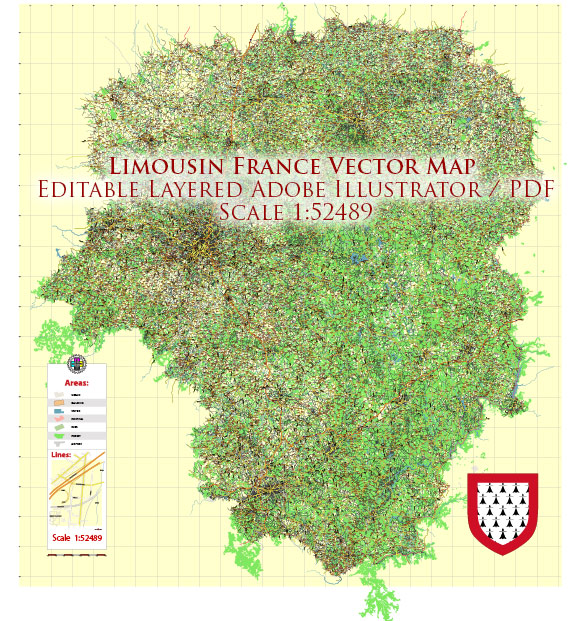Limousin is a region in central France known for its beautiful countryside, historic towns, and rich cultural heritage. The region has a transportation system that allows residents and visitors to travel conveniently within and to and from Limousin. Here are some key aspects of the transportation system in Limousin:
- Roads and Highways: Limousin is well-connected by a network of roads and highways. The A20 autoroute (motorway) is one of the main routes running through the region, connecting it to major cities like Paris, Toulouse, and Bordeaux.
- Trains: The French national railway system, SNCF, operates train services in Limousin. There are several train stations in the region, with Limoges being the main hub. Trains provide efficient connections to other French cities.
- Buses and Coaches: Local and regional bus services are available for intra-region travel. These buses connect towns and villages, making it convenient for residents to get around.
- Airports: Limoges-Bellegarde Airport is the main airport in the Limousin region. It provides domestic and international flights, making it a convenient entry point for travelers. Brive–Souillac Airport and nearby airports in neighboring regions can also be used.
- Cycling: Limousin offers scenic routes for cyclists, and there are many cycling paths and trails. Bike rentals are available for tourists who want to explore the region on two wheels.
- Car Rentals: Car rental agencies can be found at airports and major towns, giving travelers the flexibility to explore the region at their own pace.
- Taxis: Taxis are available in towns and cities in Limousin and can be a convenient way to get around locally.
- Rural Transport: Given Limousin’s rural nature, some areas might have limited public transportation options. In such cases, it’s essential to plan your travel and potentially rent a car if you intend to explore less accessible regions.
- Carpooling: Carpooling has become increasingly popular in France, and there are platforms and apps that allow you to find rideshare options for longer journeys.
Overall, Limousin has a well-developed transportation infrastructure, making it accessible to both residents and tourists. The road and rail networks, along with the airport, ensure that the region is well-connected to the rest of France and Europe, making it a great place to explore, whether you’re interested in the natural beauty, historic sites, or the local culture.


 Author: Kirill Shrayber, Ph.D.
Author: Kirill Shrayber, Ph.D.